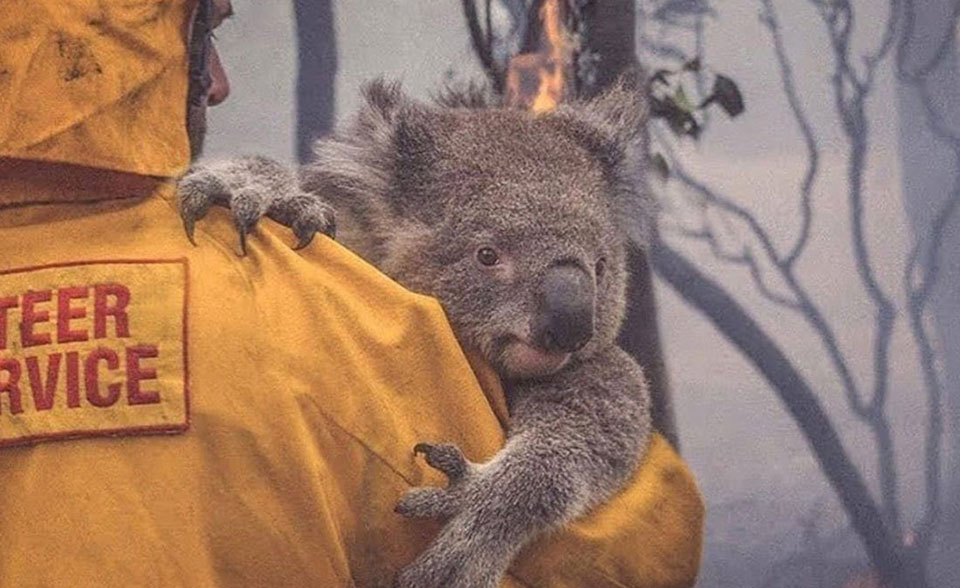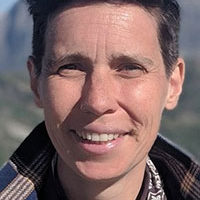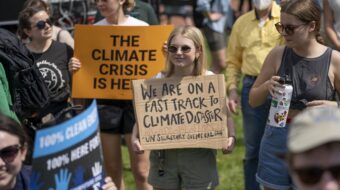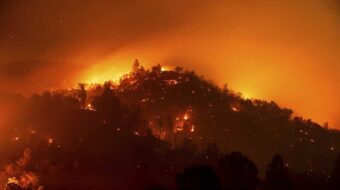
In early May scientists discovered a plume of smoke wafting from a smoldering sequoia that ignited during 2020’s Castle fire, which set California’s Sequoia National Forest alight last August.
The fiery remnant is the result of another too-dry winter in California and an ominous marker for the beginning of the 2021 fire season, which experts say looks “grim” for California and across much of the West.
March and April were the driest in more than 126 years for Arizona, New Mexico, Nevada, and Utah, and the third and fourth driest for California and Colorado. Oregon, meanwhile, had its driest April ever. Things are predicted to continue to be both hotter and drier than normal across the West and Plains, according to the National Interagency Fire Center.
That combination, driven by climate change, caused record-breaking wildfires last year. And this year could be similar.
“More frequent drought, hotter summers, and warmer and drier autumns, tied to climate change, are stacking the deck for large and destructive fires during the heart of the fire season,” The Washington Post reported. “And this year, a lack of rain in spring could mean fires arrive early in some areas.”
An increase in the size and number of fires is also driving more research. Here’s what scientists have found recently about how wildfires are affecting ecology and communities:
1. California’s Troubling Trends
If it seems like wildfire danger is getting worse in California, that’s on target.
A new study published in Nature Scientific Reports found that the frequency and total area burned by wildfires in California have both increased significantly in the past 20 years. Wildfire season is now longer, and the yearly peak comes a month earlier.
The researchers also found geographic changes. “Hotspots” with severe fire risk — once limited to Los Angeles County — are now found in other parts of Southern California and across northern parts of the state. “Natural wildfires became more concentrated in Northern California,” the researchers found. But “human-caused wildfires have even emerged [in] new hot spots… along the west coast and the Sierra Nevada mountain range.”
Climate change and human land-use activities are the major drivers of these increases, but the expansion of the “wildland-urban interface” and continued development now also put more people and property in the way, according to the study.
2. Midwest Flames
The West isn’t the only part of the country battling increasing blazes. A state of emergency was declared in Wisconsin on April 5 as wildfire season there arrived two weeks early.
“Between 2016 and 2020, Wisconsin averaged 742 fires per year and lost 1,200 acres to fires,” The Guardian reported. But just four months into this year, there were already 365 fires, totaling 1,518 acres.
The state is expected to see its biggest fire season in five years.
3. Learning From Australia
Of course, everything is relative.
Last year 4 million acres burned in California wildfires. That’s dwarfed by the 46 million acres consumed in Australia’s 2019-2020 bushfires.
Wildfire is a natural part of many ecosystems in Australia and beneficial for some species. But research is beginning to show some of the short-term effects of Australia’s recent fires on plants and wildlife.
Recent research found that the critical habitat of more than 830 native vertebrate species was affected. Seventy species lost nearly one-third of their range, with 21 of those species already at risk of extinction before the fires.
Another study found that more than 800 vascular plant species were “highly impacted.” The ranges for 116 species were entirely burned and another 173 lost 90% of their habitat.
“The megafires occurred within globally significant biodiversity hotspots with high richness and endemism across important plant groups,” the researchers wrote.
The good news is that many of the affected plants are resilient to fire, although the researchers say that some areas may not be able to recover. “The massive biogeographic, demographic and taxonomic breadth of impacts of the 2019-2020 fires may leave some ecosystems, particularly relictual Gondwanan rainforests, susceptible to regeneration failure and landscape-scale decline,” they wrote.
4. Landscapes Shifting
Landscape-scale changes as a result of climate change and wildfires are happening elsewhere, too. A study published in Ecosphere found that when a wildfire in southwest Colorado’s Rocky Mountains follows a severe bark beetle outbreak, Engelmann spruce trees are unable to recover.
The loss of conifers following that one-two punch is likely to lead to more quaking aspens taking root, and a possible shift in forest type — and the species that depend on those trees.
Changes are afoot in California too, particularly in chaparral. That ecosystem is made up of assemblages of native woody shrubs found along many of the state’s coastal foothills and inland mountain slopes. The natural interval for fire return to chaparral is between 30 and 150 years, but in some places, that’s been shortened to just 10 years.
Not all species are able to adapt to that change. Some chaparral shrubs are being replaced by weedy annual grasses, which in turn drive more fires in an unfortunate feedback loop.
An increase in the frequency and severity of fires in chaparral also threatens an oft-overlooked part of the ecosystem: lichen, which play a key role in retaining moisture in the soil and providing food for wildlife.
A new study found that while most lichens don’t survive wildfires in chaparral, they can recolonize in the decades following. However, with fires happening more frequently, we’re likely to see “substantial lichen biodiversity losses in chaparral shrublands.”
5. Fighting Fire With Fire
Parts of California’s chaparral may be seeing too much fire, but other areas are still in fire deficits after a century of fire suppression policies. Land managers are beginning to see that bringing fire back to the landscape can be an important tool, though.
Of course, Indigenous communities already knew that and have employed cultural burning practices for millennia. Some of that Indigenous environmental knowledge is being shared by tribes like the Yurok, Hoopa, and Karuk in Northern California.
But there are still many barriers to prescribed burns, including air-quality regulations and the capacity and funding to implement projects.
This article was reposted from EcoWatch, via The Revelator.












Comments